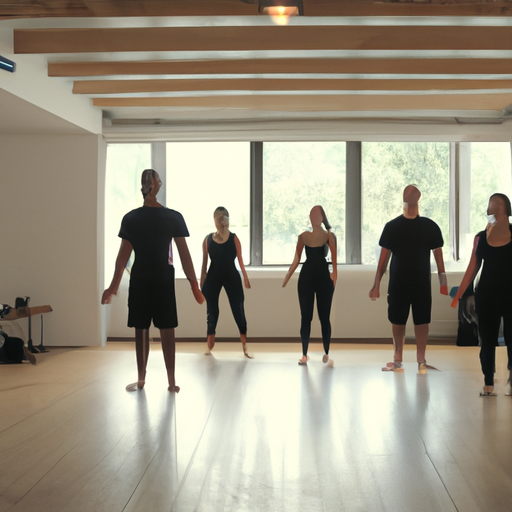Explore the powerful connection between mindfulness and physical activity for holistic health benefits. Learn how combining mental awareness with movement can enhance both physical performance and emotional wellbeing. Discover practical techniques to transform your exercise routine into a mind-body experience.

The integration of mindfulness with physical activity represents a powerful approach to wellness that goes beyond traditional exercise benefits. This comprehensive exploration reveals how mindful movement can transform both your physical and mental health, creating a more balanced and fulfilling fitness journey.
Understanding Mindful Movement Mindful movement is more than just exercise with added concentration – it's a fundamental shift in how we approach physical activity. This practice involves bringing full awareness to the body's movements, sensations, and reactions during exercise. Unlike conventional workouts focused purely on physical outcomes, mindful movement emphasizes the quality of attention and presence during activity.
The mind-body connection activated during mindful movement creates a unique state of awareness that can enhance physical performance while promoting mental clarity and emotional balance. This approach has roots in ancient practices like yoga and tai chi, but can be applied to any form of exercise.
The Science Behind Mind-Body Exercise Research has shown that mindful movement practices trigger distinct neurological and physiological responses. When we combine focused attention with physical activity, we activate both the sympathetic (energy-mobilizing) and parasympathetic (relaxation) nervous systems in a balanced way.
This balanced activation leads to improved stress management, better emotional regulation, and enhanced body awareness. Studies have demonstrated that mindful movement can reduce cortisol levels, increase GABA (a calming neurotransmitter), and improve heart rate variability – all indicators of better stress resilience.
Practical Applications Any form of exercise can become mindful movement with the right approach. Here are key practices for different activities:
Strength Training: - Focus on the quality of each movement - Notice muscle engagement and release - Maintain awareness of breath timing - Observe form with curiosity rather than judgment
Cardiovascular Exercise: - Pay attention to rhythm and pace - Notice the pattern of footfalls or movement - Stay present with breathing patterns - Observe changing energy levels
Flexibility Work: - Feel the subtle sensations of stretching - Notice areas of tension and release - Maintain steady, conscious breathing - Observe the body's natural limits
Benefits of Mindful Movement The benefits of combining mindfulness with exercise extend far beyond conventional fitness goals:
Physical Benefits: - Improved movement efficiency - Better body awareness and coordination - Reduced risk of injury - Enhanced recovery and adaptation
Mental Benefits: - Decreased stress and anxiety - Improved focus and concentration - Better emotional regulation - Enhanced mind-body connection
Performance Benefits: - More effective training sessions - Better form and technique - Improved athletic performance - Greater exercise enjoyment
Starting a Mindful Movement Practice Beginning a mindful movement practice doesn't require dramatic changes to your current routine. Start with these simple steps:
1. Begin with Breath Awareness Before starting any exercise, take a few moments to connect with your breath. Notice its natural rhythm without trying to change it. This creates a foundation of awareness that can extend into movement.
2. Body Scan Perform a quick body scan, noting any areas of tension or discomfort. This increases body awareness and helps identify areas needing attention during exercise.
3. Set an Intention Establish a clear intention for your practice. This might be as simple as moving with awareness or as specific as focusing on particular aspects of form or technique.
Progressing Your Practice As you become more comfortable with basic mindful movement, you can deepen your practice:
Advanced Awareness Techniques: - Notice the quality of your movements - Observe transitions between exercises - Pay attention to changing energy levels - Monitor emotional responses
Integrating Mindfulness into Different Activities Different forms of exercise offer unique opportunities for mindful practice:
Yoga and Pilates: - Focus on breath-movement coordination - Notice subtle alignment adjustments - Observe the balance of effort and ease
Running and Cycling: - Pay attention to rhythm and cadence - Notice changing terrain and adaptation - Maintain awareness of form and efficiency
Team Sports: - Stay present with game flow - Notice spatial awareness - Observe team dynamics and energy
Overcoming Common Challenges Mindful movement can present certain challenges:
Distraction: - Start with shorter periods of focused attention - Use external cues as mindfulness anchors - Return to breath awareness when mind wanders
Impatience: - Remember that progress is gradual - Focus on process rather than outcomes - Celebrate small improvements in awareness
Creating Sustainable Practice Making mindful movement a lasting part of your fitness routine requires:
Consistency: - Schedule regular practice times - Start with manageable durations - Gradually increase complexity
Adaptability: - Adjust practice to energy levels - Modify based on circumstances - Maintain flexibility in approach
The Future of Mindful Fitness As research continues to demonstrate the benefits of mindful movement, we're seeing increased integration of these principles into mainstream fitness:
Technology Integration: - Apps supporting mindful exercise - Wearable devices tracking mental states - Virtual reality mindful movement experiences
Community Aspects: - Group mindful movement classes - Online communities sharing experiences - Professional development in mind-body approaches
Conclusion Mindful movement represents a evolution in how we approach exercise, offering a path to more sustainable, enjoyable, and effective physical activity. By bringing together the benefits of mindfulness and exercise, we can create a more balanced and fulfilling approach to fitness that nurtures both body and mind. Whether you're an experienced athlete or just beginning your fitness journey, incorporating mindful movement principles can enhance your exercise experience and overall wellbeing.



